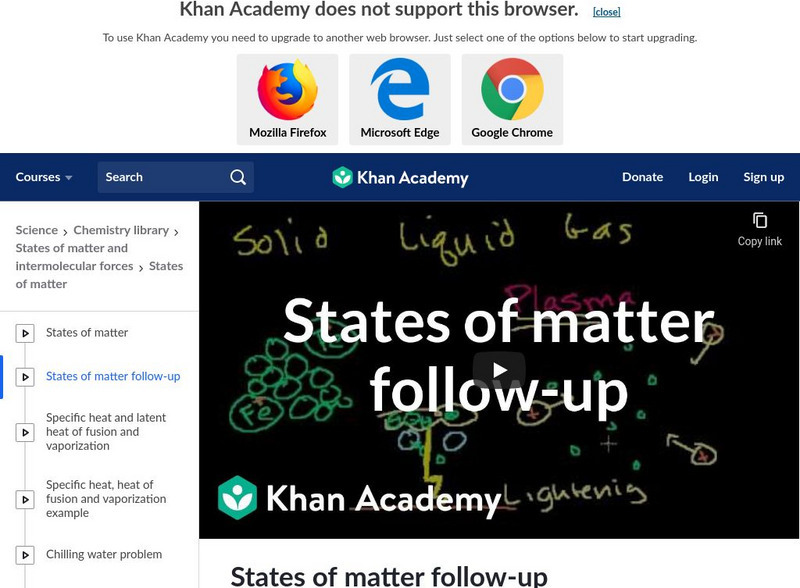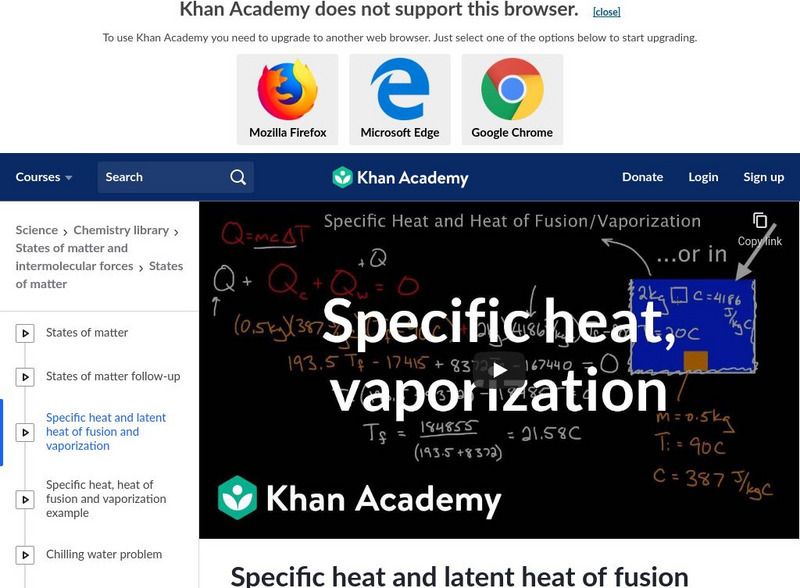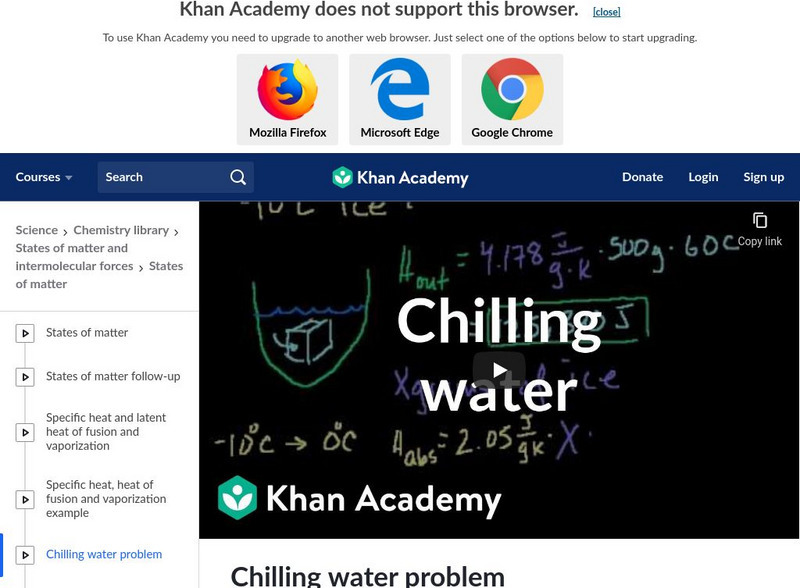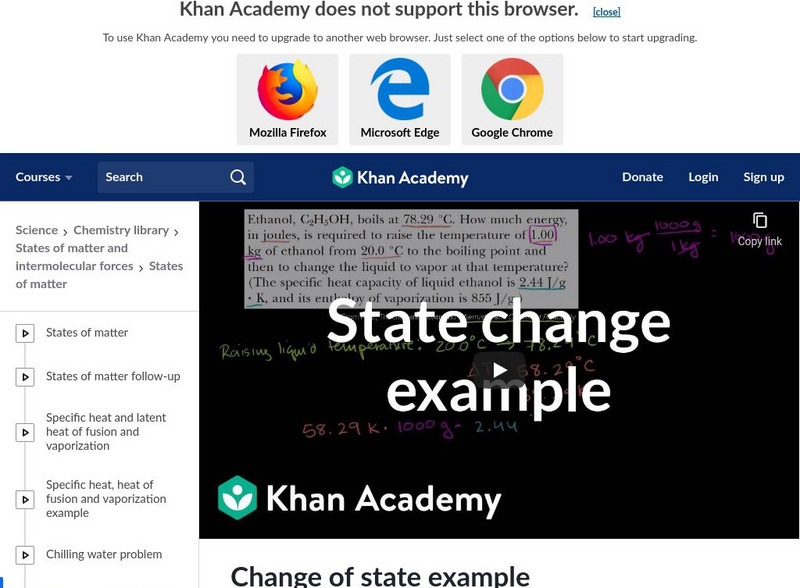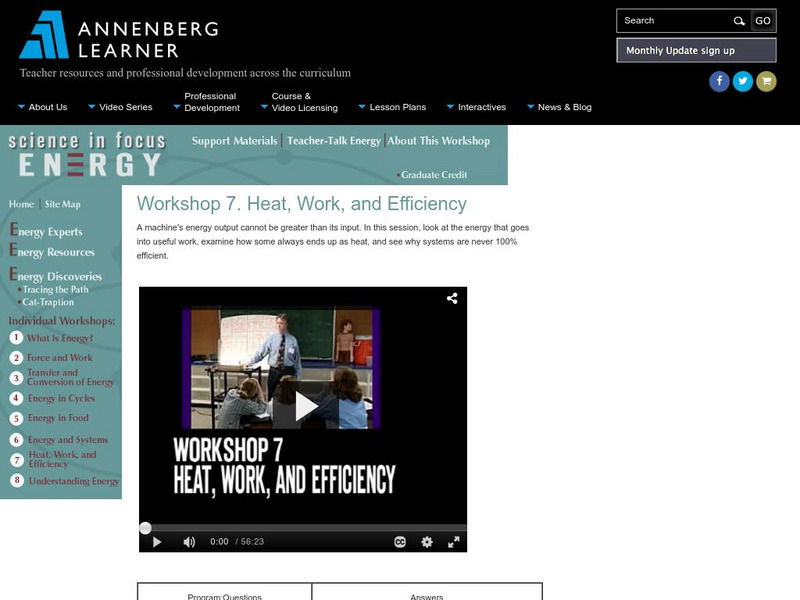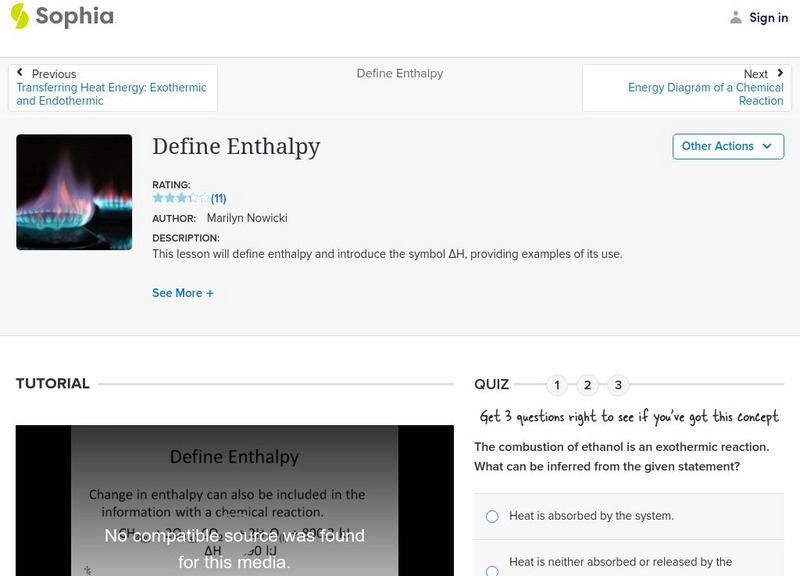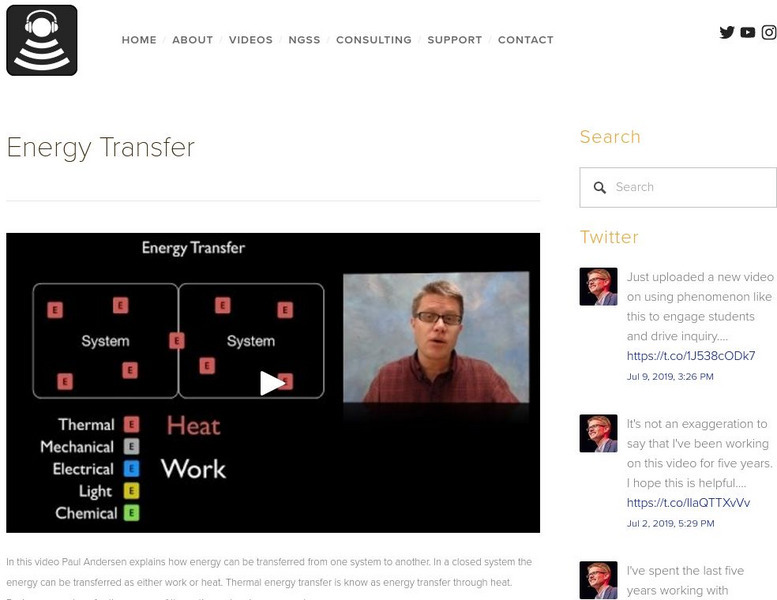Hi, what do you want to do?
American Chemical Society
Temperature and Energy
Many scholars know weight is actually a measure of gravity, so what is temperature? The video explains that temperature is a measure of kinetic energy. It connects the concept of how water evaporates when heated with how water evaporates...
American Chemical Society
The Energy of Toys
Many children's toys demonstrate energy transfer without electricity. The video highlights the drinking bird, which bobs up and down thanks to a chemical reaction. It also demonstrates other classic toys that show energy transfer...
American Chemical Society
What Is Energy?
Kids sure do seem to have a lot of energy, but what exactly is energy? A video explains many different types of energy, starting with potential and kinetic. It highlights the most common forms of potential energy, including...
SciShow
Sonoluminescence: When Sound Creates Light
The mantis shrimp's claws snap to produce a bubble that is as hot as the sun. How they manage to do that is the focus of a video on the cavitation caused by the shrimp and how the creature is able to create sonoluminescence....
Bozeman Science
Thermoregulation
Hey, crank up the thermostat, my computer froze again! In a thermoregulation video, learners see how organisms either maintain their body temperatures or do not. The instructor explains the difference between conduction, convection,...
Crash Course
Energy and Chemistry
Everything around you is related to chemistry and more specifically, the energy within a system. The video explores how energy, in its different forms, changes after conversion — given off as heat or absorbed as heat in...
DoodleScience
Energy Transfer and Efficiency
Offering more than just light, a lamp can serve a dual purpose as a heater. The video shows that a lamp converts electricity to light and heat energy. Although the purpose of the lamp is light, most of the energy is in the form of heat....
DoodleScience
The Energy Types
How many types of energy can you name? A video introduces all 10 types of energy and gives a brief explanation of each.
TED-Ed
How to Unboil an Egg
If you believe hard boiling an egg to be an irreversible process, then think again! Take a few minutes to watch this fun video as it explores the process for unboiling an egg and learn about the applications this process...
TED-Ed
How Quantum Mechanics Explains Global Warming
What do quantum mechanics and global warming have to do with each other? More than you might think. Surprisingly, this video explains how it's not the energy emitted from the sun that causes the problem, but how the infrared radiation...
Steve Spangler Science
Superheated Steam - Cool Science Experiment
Did you know that steam can be used to light a match? Mr. Spangler demonstrates that although it is made of water, steam contains a tremendous amount of energy. It's heat is used to light a match and burn some paper. This is an...
Curated OER
STEMbite: Diffusion
A biology or physical science class would benefit from viewing this video on diffusion and molecular motion. Mr. Vanden Heuvel plays with food coloring in drinking glasses, showing that the faster the water molecules are moving due to...
Curated OER
STEMbite: Heating up Ice
In a cool lesson, we discover that ice can vary in temperature. As heat is added and it approaches 32°F, it begins to melt. When it melts, it absorbs heat energy. If you want your drink to stay colder longer and not get watery, put...
Khan Academy
Khan Academy: States of Matter
This tutorial serves as an introduction to the states or phases of matter. [19:24]
Khan Academy
Khan Academy: States of Matter Follow Up
As follow up to the introductory video on the states of matter, this tutorial dives deeper into plasma and hydrogen bonds. [8:45]
Khan Academy
Khan Academy: Specific Heat and Latent Heat of Fusion and Vaporization
Defining specific heat, heat of fusion, and heat of vaporization, learn how to calculate the amount of heat to change the temperature of water and the energy required to change for a phase change. [14:57]
Khan Academy
Khan Academy: Chilling Water Problem
Using phase change diagrams, find out how much ice at -10 degrees C is necessary to get 500 grams of water down to 0 degrees C. [11:23]
Khan Academy
Khan Academy: Change of State Example
This is a specific heat capacity and enthalpy of vaporization example: calculating how much energy it takes to vaporize 1.00 kg of ethanol starting from 20 degrees C. [7:38]
Annenberg Foundation
Annenberg Learner: Science in Focus: Energy: Heat, Work, and Efficiency
Video workshop explores how heat is generated and harvested to do useful mechanical work. Video also describes efficiency of an engine, expansion and compression of gases, and friction's relationship to heat. [56:54]
Smithsonian Institution
Smithsonian Science Education Center: Fired Up About Energy
Did you ever want to see inside your student's minds while you are teaching a concept? Through this video, you can see the common assumptions student's hold about energy and how you can build on these ideas to explain the Law of...
PBS
Pbs Learning Media: Nova Uneven Sea Level Rise
View this clay animation video by NOVA to examine the reasons sea levels will not uniformly rise around the world. Factors affecting sea levels include climate change, the natural tilt of the ocean, expansion of water, and gravity....
Sophia Learning
Sophia: Define Enthalpy
This lesson will define enthalpy and introduce its symbol, providing examples of its use.
Bozeman Science
Bozeman Science: Thermal Equilibrium
In the following video Paul Andersen explains how objects in contact with varying temperatures will eventually reach thermal equilibrium with equal temperatures. The amount of thermal energy transferred is related to the mass and...
Bozeman Science
Bozeman Science: Energy Transfer
In the following video Paul Andersen explains how energy can be transferred from one system to another. In a closed system the energy can be transferred as either work or heat. Thermal energy transfer is know as energy transfer through...



















